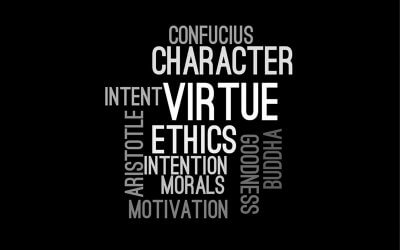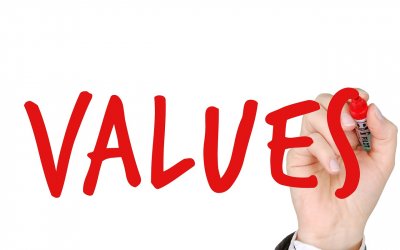Discover how understanding the limitations of averages and embracing probabilistic thinking can improve decision-making and risk management in business.

What is the hidden risk in your company?
I was recently talking with a friend who was presenting on “Risks within Your Business” to company directors. This topic made me think of all the companies that I had worked with over the years and what was the most significant unrealized threat they faced within the organization. Upon reflection of all of 2 minutes, I concluded that it was Excel!
Yes, it is Excel! Excel has taken over our corporate environments where it is used by finance, marketing, sales, HR, etc. to do everything from planning, budgeting, forecasting, pricing, reconciliation, and analysis. While Excel is a marvelous tool, which undoubtedly made many of these tasks much more manageable, the problem is that anyone can use it and change a model without anyone else realizing it.
There are three areas of concern:
1. Incorrect models.
Many people within organizations develop Excel models to solve problems that they are currently facing. However, many of these models are built using the improper practices that I’ve highlighted in previous blogs. As a result of these practices, other users of the models are not always aware of the model’s shortcomings but still rely on the output to make significant decisions.
In one case, the model’s author had linked all but two of the assumptions to the assumptions page, thus changing the assumptions all but two of them change within the model. As a result, no one was aware that these two assumptions when “off-line” for the model and were making decisions based on incorrect conclusions. While appearing to be an insignificant problem, the lack of connection of these assumptions led to the approval of some projects because they had positive NPVs and good IRRs, but in reality, were terrible projects with negative returns.
2. Hard-Coded Models.
Many models are built using the corrupt practices I have mentioned before. While I have come across many of these, I cannot meet the example given by my friend Rob Brown in his blog post. To have an organization making decisions with an error in their spreadsheet of the order of magnitude of $200 million that no one was aware of is scary. Do you have one of these in your company? Before you answer “No,” are you sure!
3. “Fixed Models.”
More worrying are those models where there is a good model, but then hard-coded change is made to prevent a #N/A or #DIV/0! result. Unfortunately, no one tells anyone about this change, and it left unnoticed for ages. As a consequence, massive errors can arise.
Recently I was working with a company whose budgeting model had some hardcoded adjustments in formulas to adjust sales, compensation, and other budget items. When reviewing this model with the company’s finance department, there was no explanation of why they made these changes. When asked how good the design was for budgeting, the answer I received was, “Last year was a horrible surprise!” As a result, I wrote CEOs Beware: Problems with Financial Modeling. At last check, the company was still using the model!
Recently I was working with a Fortune 500 company that had a model to drive dashboards for the executive team. Somewhere the data had not all been supplied, and so there was a #DIV/0! result. Rather than fix this, someone had changed some formulae to exclude the offending cells and their related data. However, when entering proper results into the offending cells, the dashboard didn’t update to reflect this. The dashboard continued to exclude these outcomes in the actual and historical averages. Who knows how many ad campaigns and how much marketing spend resulted in improving the results when the results were probably already exceeded expectations.
So what to do?
Companies, departments, etc. should review all their models regularly. This review involves someone checking all the calculations, cell references, and links to ensure that the model is performing as expected. A painful task, but undoubtedly better than to keep walking off the cliff, hoping you can survive the landing.
© 2015 Marc Borrelli All Rights Reserved
Recent Posts
The “Flaw of Averages” Causes Havoc for Businesses
What is Your Strategy, In a Sentence?
If you are banking on the vaccine returning us all to “normal” quite quickly, in the famous words of Dr. Akande, “Hope is not a strategy.” Your organization should be preparing a well-defined strategy for 2021 and beyond. Once you have this strategy, the ultimate question: can you clearly articulate it in one sentence? Distilling your strategy into a single sentence is a powerful tool, both for your legacy and your team effectiveness. Not sure where to start? I offer a plug-in formula to set up your strategy sentence.
Character Matters
“It’s easier to hold to your principles 100% of the time than it is to hold to them 98% of the time.” — Clayton Christiansen. I have often written about the importance of a company’s Core Values. That’s because no matter what words you may have chosen as values, your organization’s Core Values are on display in how leadership and employees actually behave. As I’ve said before, how you have acted in the last twelve months will define your career for the next decade. Your character, and your company’s character, matters.
New Year’s Resolutions, Once More Unto the Breach
The holidays have been even quieter than normal, which has given me plenty of time to reflect on my New Year’s resolutions. Looking at 2021, I decided to use a completely new approach to lay out my goals. The result of my new approach? A highly-detailed, accountable, actually achievable plan for the next year (I think). Wondering what this process looks like?
To Vaccinate or Not to Vaccinate, that is the Question
What do your employees, peers, and leadership team think of the COVID-19 vaccine? Will you require the vaccine, or will you let employees make individual decisions? As a leader, you need to steer the discussion about vaccines in your organization with your Core Values in mind. No matter what strategy your organization takes, the most important factor is going to be how you communicate your decision.
3 Ways You Could be Undermining Your Core Values
Can you answer “Why does your organization exist? What are your core values?” Great. Now, would your latest entry-level employee give a similar answer? How about someone who has been at your company for a year? Your core values give your organization a guiding mission. Many organizations pay this idea lip service, but their true commitment to their core values was tested this year. As we close out 2020, there’s no better time to examine how your organization is approaching your core values.
Are You Prepared for 2021 With Enough Cash?
Companies don’t go bankrupt because they lose money; rather, they run out of cash. Where are we, heading into 2021? First, you can expect your cash to get tighter as we weather the current economic slowdown. Then, with a vaccine on the horizon, you will need to be positioned for growth. If you don’t have the cash you need, have you looked at how you can generate the cash internally? More on how to improve your cash conversion cycle…
Tony Hsieh, a Corporate Culture Icon, RIP
In his work as Zappos CEO and elsewhere, Tony Hsieh believed, and proved, that culture is the most important thing in an organization. According to Hsieh, if you get the culture right, the rest will take of itself. How did Zappos do it? You can take a look at everything from the company’s interview questions, to “The Offer” to leave a position as a new hire. Hsieh believed that a company’s brand is just a reflection of the culture, and his legacy is felt across so many industries.
CEO, Try Thy Hiring System
How does your company hire? I’ve seen the good, the bad, and the surprisingly ugly hiring processes in my career. From the HR email mix-ups to the interviewer watching the World Series while I responded to his questions, I’ve learned that you can tell a lot about an organization simply by examining the hiring experience. Are you chasing away the kind of people you need at your company?
What is Leadership?
What is it, exactly, that great leaders do? There are plenty of overused adages about “leadership” in business. It’s worth examining the tropes around leadership, plus the traits of the leaders who actually leave a mark. Great leaders are forged through adversity, and they leave a legacy. What does that look like in your organization?










